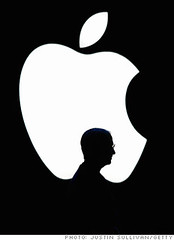That situation has improved recently but I'm still more than a little ambivalent about it. Don't get me wrong, the hardware is nice for the most part with the screen being excellent. The software is an evolutionary step up from my original Kindle Fire but easy enough to navigate and well suited to Amazon's business model of making it easy to buy and consume content from the Amazon store so what's the problem?
I try to be technology agnostic but there are a some things I don't want to do without. At the top of that list is GMail with several other Google. You don't get the Google apps with the Fire even though it is running Android under the Amazon User Interface. Rooting the device is an option but based on my experience with rooting my original Kindle I'd prefer not to go down that path. Things tended to break and apps become unreliable.
Google provides apps for iOS, they need to be in the Amazon app store as well. I've debated recently which company is to blame for the absence though so I won't take any more time on that topic here. Note you will see a picture of the Play store on some of the screen shots. This is a result of a half hearted attempt to work my way around this problem. It exits immediately when launched. :-(
I also purchased the Amazon Kindle HD Case which is kind of expensive but nice. It is included on the images below.
Production values have gone up a bit as I'm now using my Nexus 4 rather than the Palm Pre+ to take pictures.
 |
| The placement of the micro USB port is sub optimal when using the optional Kindle Cover |
One minor nit with the case is that the back tends to slide when it is used as a stand on smooth surfaces which causes the Fire HD to collapse slowly to the table.
 |
| The cover is sturdy and well made. This is the front |
As the caption on the first picture above mentions the Kindle Fire is not without design flaws. The placement of the micro USB and HDMI ports is sub optimal when the Fire HD is used with the case. Ideally they should have been put on the opposite side from the volume and resume buttons which are on the right hand side of the picture above.
 |
| This is the back of the cover. Note the speaker grills |
The case fits the Fire like a glove but is reasonably easy to attach and remove. It's available seven different shades. This is "Ink Blue".
 |
| You can see the shiny in the picture above. I only occasionally find it distracting |
The screen automatically dims when the case cover is closed and battery life is very good when the Fire HD is in standby mode. Battery life in general seems good as I can go several days of casual use between charging.
 |
| Can anyone name the film? |
You can pretty much use the Fire HD as a mirror in many lighting situations. In spite of that the viewing experience is actually good the majority of the time and when the lighting is dim it looks amazing. To be fair, as you'll see in some of the pictures below it's really no worse than the iPad 2.
Overall performance is excellent with the included apps but I have noticed some sluggishness and lag on apps I've purchased such as "Air Harp" and "Archipelago". I'm inclined to blame this on the apps themselves since most things work fine.
The discounted AT&T 4G LTE plan is a nice first year feature if you purchase the 4G version. It will be interesting to see if it is available after the initial year. It really isn't cheap on a per megabyte basis if you compare it to AT&T's larger data plans so I think there is a decent chance AT&T will extend the offer.
Fire HD Versus iPad
The iPad is often referred to as a ten inch tablet when in reality the screen size is only 9.7 inches. The Fire HD 8.9 is exactly the same width as the iPad when in the landscape orientation with the difference in screen size between the two devices being explained by their very different aspect ratios. |
| The Fire HD nearly covers the iPad 2 |
In the picture above I've placed the Fire HD on top of my iPad 2. You can see that they are much closer in overall size than you might expect given the difference in screen sizes
 |
| Detail showing that the width of the screens is pretty much identical as are the Bezels |
In fact they are identical width wise both in terms of their overall size and bezel's.
 |
| Side by side, notice the restrictiveness of the screens is very similar |
The iPad's retro aspect ratio means you're basically going to have the same experience viewing most movies on either since you'll get large black bands at the top and bottom of the iPad which will not be the case for the Fire HD. The iPad 2 is much lower resolution as well. This isn't an issue with the iPad 3 or 4 as they have approximately the same screen bit density as the Fire HD.
Conclusion
The Kindle Fire HD 8.9 is a nice but somewhat flawed experience.
If you're only interested in consuming stuff from the Amazon ecosystem then chances are you'll be pleased. If you want a full Android tablet experience and you aren't willing to root the Fire HD than the Nexus 10 is a much better bet though you would miss out on instant streaming video if you are an Amazon Prime member.
Overall I'm OK with this purchase but a bit disappointed. I only have myself to blame though as I knew what I was getting into.
I don't mean to imply the Fire HD is bad. It really is a nice piece of hardware and you get a lot for your money. I just don't like having to live without GMail, Google+ and the rest of the Google app suite.











































